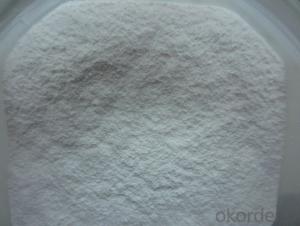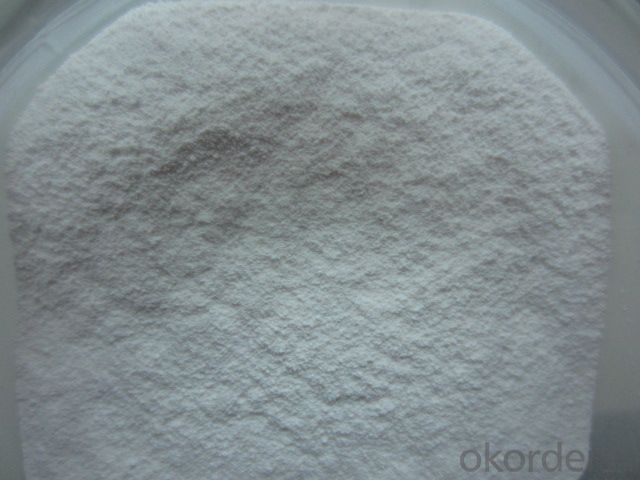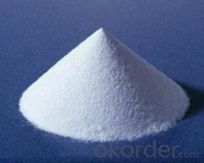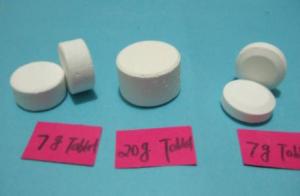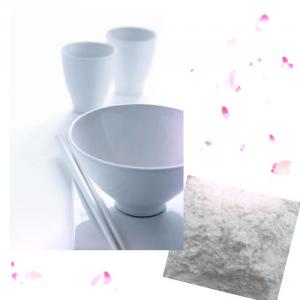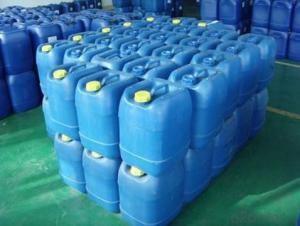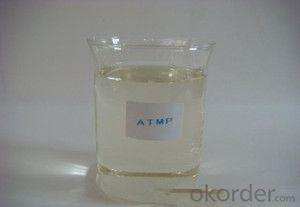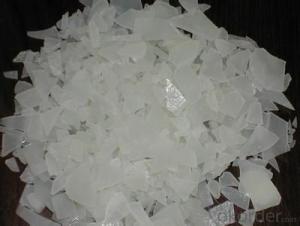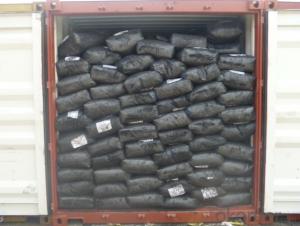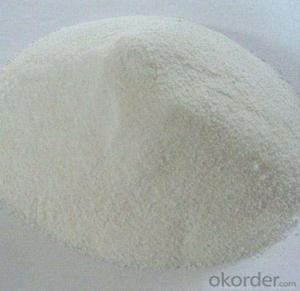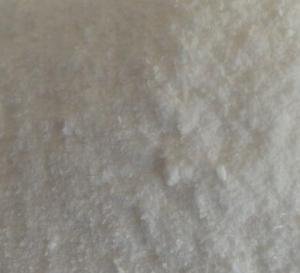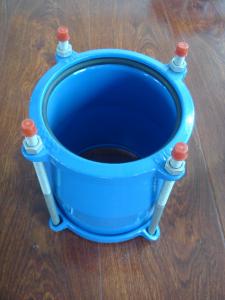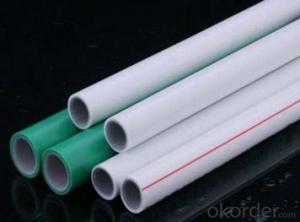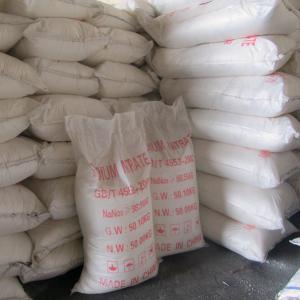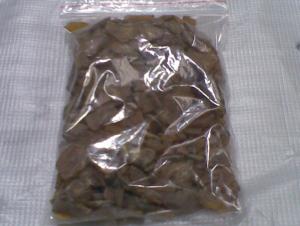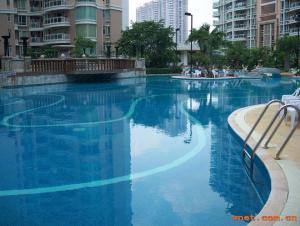Impact Modifier Additives for PVC profiles,plastic pipes
- Loading Port:
- Qingdao
- Payment Terms:
- TT or LC
- Min Order Qty:
- 2000 kg
- Supply Capability:
- 100000 kg/month
OKorder Service Pledge
OKorder Financial Service
You Might Also Like
1. Structure of Pvc Impact Modifier Description
Classification:Chemical Auxiliary Agent
CAS No.:63231-66-3
Other Names:chlorinated polyethylene
Appearance:White Powder
Chlorine Content:35%
Volatiles Content:0.3%
Tearing Strength:8.0Mpa
Elogation at Break:800%
2. Main Features of the Calcium Pvc Compound Stabilizer/Specification
Item | Unit | Index | |
Chlorine content | % | 35±1 | |
Thermal decomposition temperature | ≥ 165 | ||
Volatile Matter content | % | ≤0.3 | |
Remains crystallinity | % | ≤ 5 | |
Tearing Strength | Mpa | ≥8.0 | |
Rate of filtration | 36mesh | % | ≥99 |
Shore Hardness A | ° | ≤57 | |
Apparent Density | g/ml | ≥0.55 | |
Impurity Particle | PC/ 10g | 10 | |
WhitenessR457 | ° | ≥86 | |
| Elogation at break | % | 800 | |
3.Images
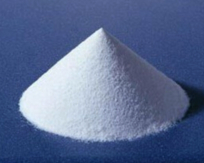
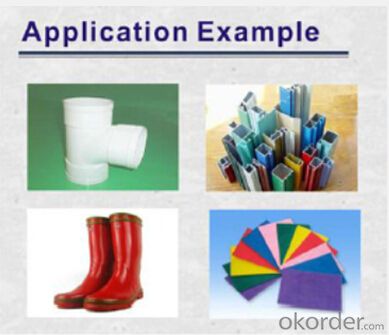
4.FAQ of Pvc Impact Modifier
1. Why Choose us?
CNBM is a stated own company, provide the guarantee for the best quality, best service and safety business.
2. How will we guarantee the quality?
a, ISO 9001-2008 quality control system;
b, Strict and regular quality control in production;
c, Inspeciation when loading into container before shippment;
d, Sample stock for one year for quality tracing and record.
3. What is your MOQ?
Our MOQ is one pallet.
4. Can you provide sample?
Yes, samples are in stock. we can offer free sample for you.
5. Payment terms?
We can accept L/C, T/T etc.
- Q: Chemical production of iodine and magnesium with water as catalyst!
- In the 250mL three bottles were equipped with spherical condenser and constant pressure dropping funnel, in the condensate tube connected to the anhydrous calcium chloride drying tube. The flask was placed with 1.5 g of magnesium chip and a small tablet of iodine, 10 g of bromobenzene and 30 mL of anhydrous ether were mixed in a constant pressure dropping funnel. First 1/4 of the mixture into the flask, a few minutes later see the magnesium surface of the bubble generated, the solution was slightly cloudy, iodine color began to disappear. If no reaction occurs, use a hot water bath. After the start of the reaction, stir, slowly dropping the remaining bromophene ether solution, dropping the rate to keep the solution was slightly boiling state, after adding, in the water bath to continue reflow 0.5h, magnesium tablets full effect.
- Q: Can a catalyst decrease the rate of a chemical reaction? Please give an example if yes.
- no, by defintion the catalyst speeds up the reaction.
- Q: The catalyst before and after the reaction of the quality and nature of the same, does it mean that a little catalyst can be all the substrate reaction? Such as: one gram of MnO2 can reflect the infinite H2O2?
- The quality of the catalyst before and after the reaction
- Q: What is the maximum impact of the chemical reaction rate? Such as catalyst, temperature, concentration. If you can, you can row order.
- Temperature and concentration also depends on the specific circumstances of the situation
- Q: And hydrogen peroxide
- I can only know that ferric ions can be, but in the iron oxide is not in the presence of ion
- Q: What is the difference between biological enzymes and chemical catalysts?
- Chemical catalysts are widely used, generally the majority of transition elements
- Q: in my 99 ram 2500 v8 5.9 that code came up, not sure what to do about it or what it could be any ideas or help with be great thanks
- DTC P0430 Catalyst System Low Efficiency Bank 2 Circuit Description In order to maintain a reasonably low emissions of Hydrocarbons (HC), Carbon Monoxide (CO), and Oxides of Nitrogen (NOx), the engine controls system uses a three-way catalytic converter. The catalyst within the converter promotes a chemical reaction which oxidizes the HC and CO present in the exhaust gas. This reaction converts them into harmless water vapor and Carbon Dioxide. The catalyst also reduces NOx, converting it to Nitrogen.
- Q: Is palladium predominantly a catalyst in chemistry?
- Palladium in the chemical mainly to do the catalyst; palladium and ruthenium, iridium, silver, gold, copper and other alloy, can improve the palladium resistivity, hardness and strength, used in the manufacture of precision resistors, jewelry and so on.
- Q: Why extract the genome, the digestion is always not cut
- The enzyme, like the general catalyst, only catalyzes the thermodynamics of the permissible chemical reaction, shortening the time to reach the chemical equilibrium without changing the equilibrium point. The enzyme as a catalyst has no qualitative and quantitative changes before and after the chemical reaction. The mechanism of action of enzymes and general catalysts is to reduce the activation energy of the reaction.
- Q: What is the relationship between the catalyst and the chemical reaction? What is the relationship between the enzyme and the catalyst?
- The catalyst can change the activation energy of the chemical reaction, thereby changing the reaction rate.
Send your message to us
Impact Modifier Additives for PVC profiles,plastic pipes
- Loading Port:
- Qingdao
- Payment Terms:
- TT or LC
- Min Order Qty:
- 2000 kg
- Supply Capability:
- 100000 kg/month
OKorder Service Pledge
OKorder Financial Service
Similar products
Hot products
Hot Searches
Related keywords
